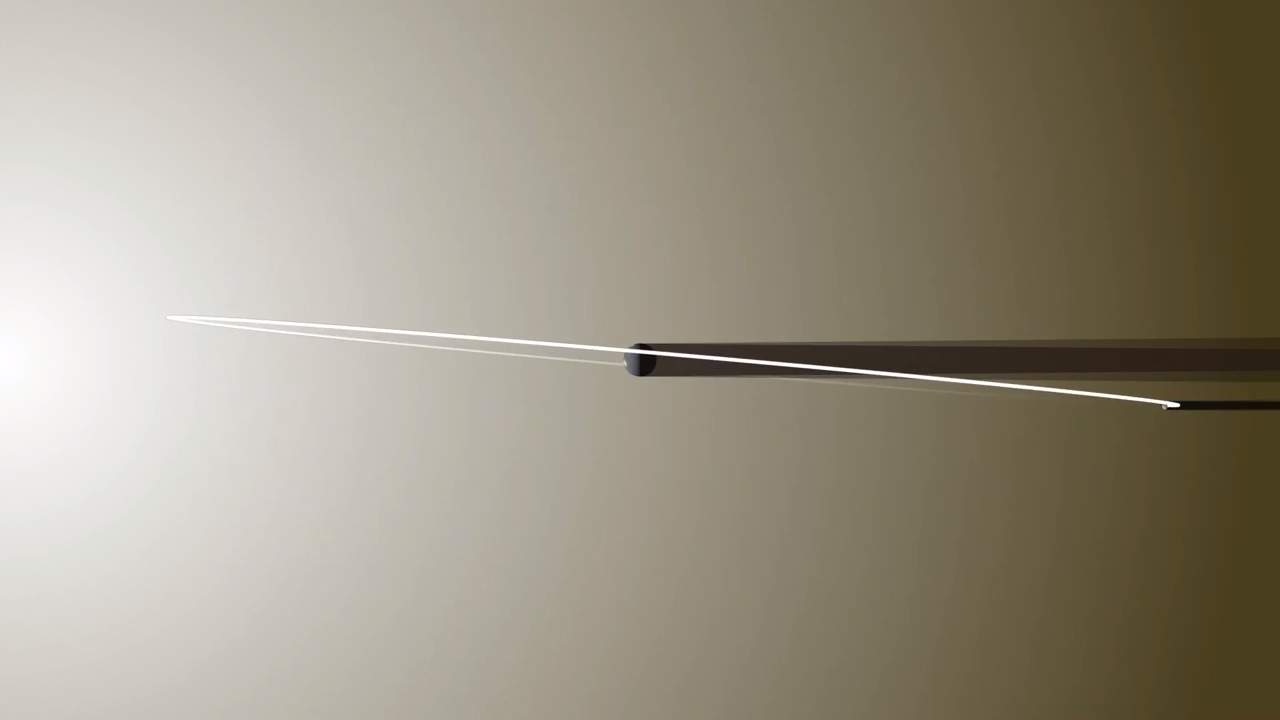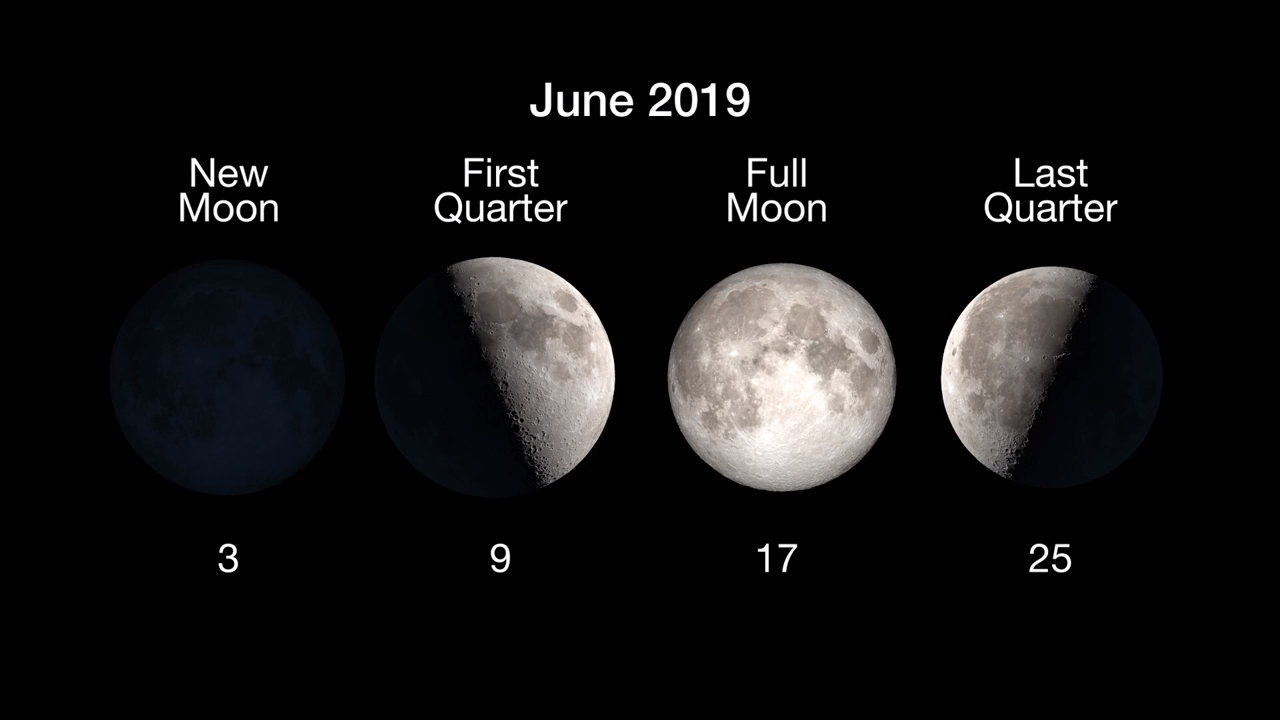What’s Up: June 2019 Skywatching Tips from NASA
| Credit | NASA/JPL-Caltech (Presenter: Preston Dyches) |
|---|---|
| Language |
|
Night Sky: June 2019: What Can You See This Month?
What's up in the June sky?
- Jupiter is at its biggest and brightest this month, rising at dusk and remaining visible all night.
- In mid-June, Mars and Mercury appear ultra-close together immediately after sunset for two days, on June 17th and 18th.
- Bonus: Learn how to observe the Moon's tilted orbit.
Transcript
What's Up for June? Jupiter is up all night, while Mercury and Mars decide to get close, and the Moon reveals its tilted orbit.
Jupiter is at its biggest and brightest this month, rising at dusk and remaining visible all night. The solar system's largest planet is a brilliant jewel to the naked eye, but looks fantastic through binoculars or a small telescope, which will allow you to spot the four largest moons, and maybe even glimpse a hint of the banded clouds that encircle the planet.
And if this leaves you yearning for a closer look, these gorgeous views from NASA's Juno spacecraft, currently orbiting Jupiter, make the planet feel almost close enough to touch.
In mid-June, Mars and Mercury appear ultra-close together immediately after sunset for two days, on June 17th and 18th (sky chart). You'll need a pretty clear view of the western horizon to catch them, as the pair will be only a few degrees above it (and the farther north you are, the lower they'll be). But it should be spectacular if you can manage it.
In the middle of the month, from about June 14th to the 19th, look for the Moon to form a beautiful lineup in the sky with Jupiter and Saturn that changes each night as the Moon moves in its orbit around Earth.
While you're out marveling this trio, there's a really neat astronomy observation you can attempt yourself, just by paying attention to the Moon's movement from night to night.
Okay, imagine a line passing through Jupiter and Saturn, like so. This more or less represents the plane in which Earth and the other planets orbit the Sun. Think of it as a big disk, and you're looking out to the edge of the disk from within it.
Look closely and you can see that the Moon doesn't move along the same line. From night to night it moves along its own path, crossing the Jupiter-Saturn line as it moves between the two giant planets on the 18th. This separate path shows that the Moon's orbit is slightly tilted with respect to Earth's orbit around the Sun.
This tilt in the Moon’s orbit is why an eclipse is kind of a special event. Eclipses occur when the Moon passes into Earth's shadow, or when Earth passes into the Moon’s shadow.
With the Moon orbiting Earth every month, you might think there would be a lunar and solar eclipse every month as well — with the Sun, Moon and Earth forming a nice, straight line. But instead, its tilted orbit means the Moon misses this lineup most months, crossing Earth's orbital plane at the right time for a lineup with the Sun only a couple of times a year.
There's a lot still to learn about the Moon, and science is one of the reasons NASA has plans for both robots and humans to continue exploring it into the future.
Here are the phases of the Moon for June.
You can catch up on all of NASA's current and future missions at nasa.gov. I'm Preston Dyches from NASA's Jet Propulsion Laboratory, and that's What's Up for this month.
About Observing Jupiter
Jupiter reaches opposition on June 10. This is the yearly occurrence when Jupiter, Earth and the Sun are arranged in a straight line, with Earth in the middle. It's the best time of the year to see Jupiter, as the planet is visible in the sky all night, and it's around the time when Jupiter is closest to Earth. Although opposition takes place on a specific date, the entire month or so around opposition is an equally good time to observe the planet and its four largest moons.
More about Jupiter:
https://solarsystem.nasa.gov/planets/jupiter/overview/
About Eclipses
Eclipses don't occur monthly because of the Moon's tilted orbit, but they do tend to happen somewhere on Earth about every 18 months. Solar eclipses have additional factors affecting their seeming rarity, though. While the full Moon in a lunar eclipse can be seen from most anywhere on Earth's night side, solar eclipses tend to have more limited visibility. This is because the Moon's shadow only sweeps across a fairly small area of Earth's surface during a solar eclipse, meaning the region of totality (where the Sun appears completely obscured by the Moon) is not very large. Additionally, most of Earth is covered by water, so lots of solar eclipses are only visible at sea. In addition, many solar eclipses are not total; rather, many are partial (where the Moon just grazes the Sun) or annular (where the Moon appears smaller than the Sun and leaves a ring of Sun visible).
More about eclipses and transits:
More about solar eclipses:
https://eclipse.gsfc.nasa.gov/solar.html
More about lunar eclipses:
https://solarsystem.nasa.gov/moons/earths-moon/lunar-eclipses/
Additional Resources
Additional astronomy & skywatching info from NASA's Night Sky Network: https://nightsky.jpl.nasa.gov



























